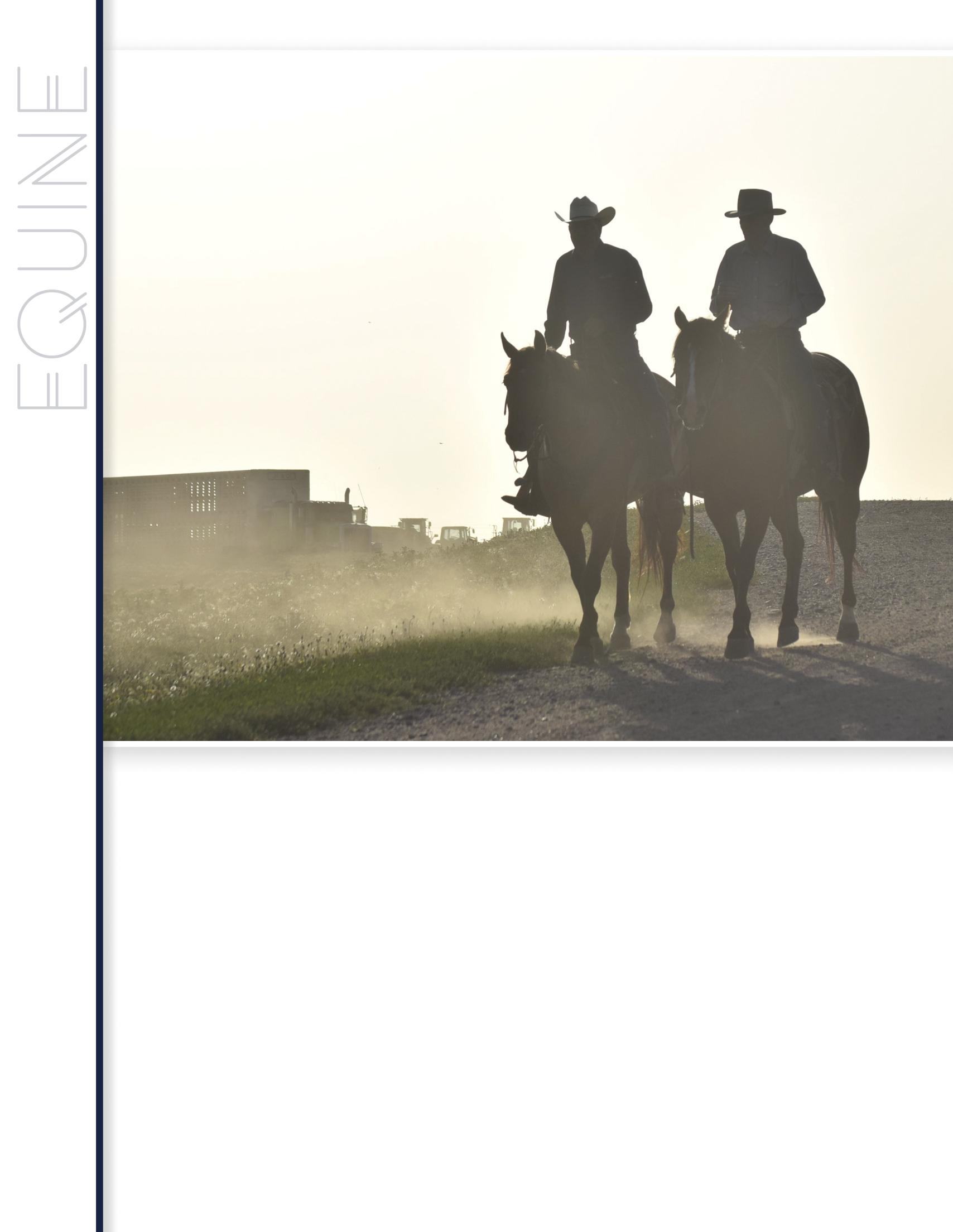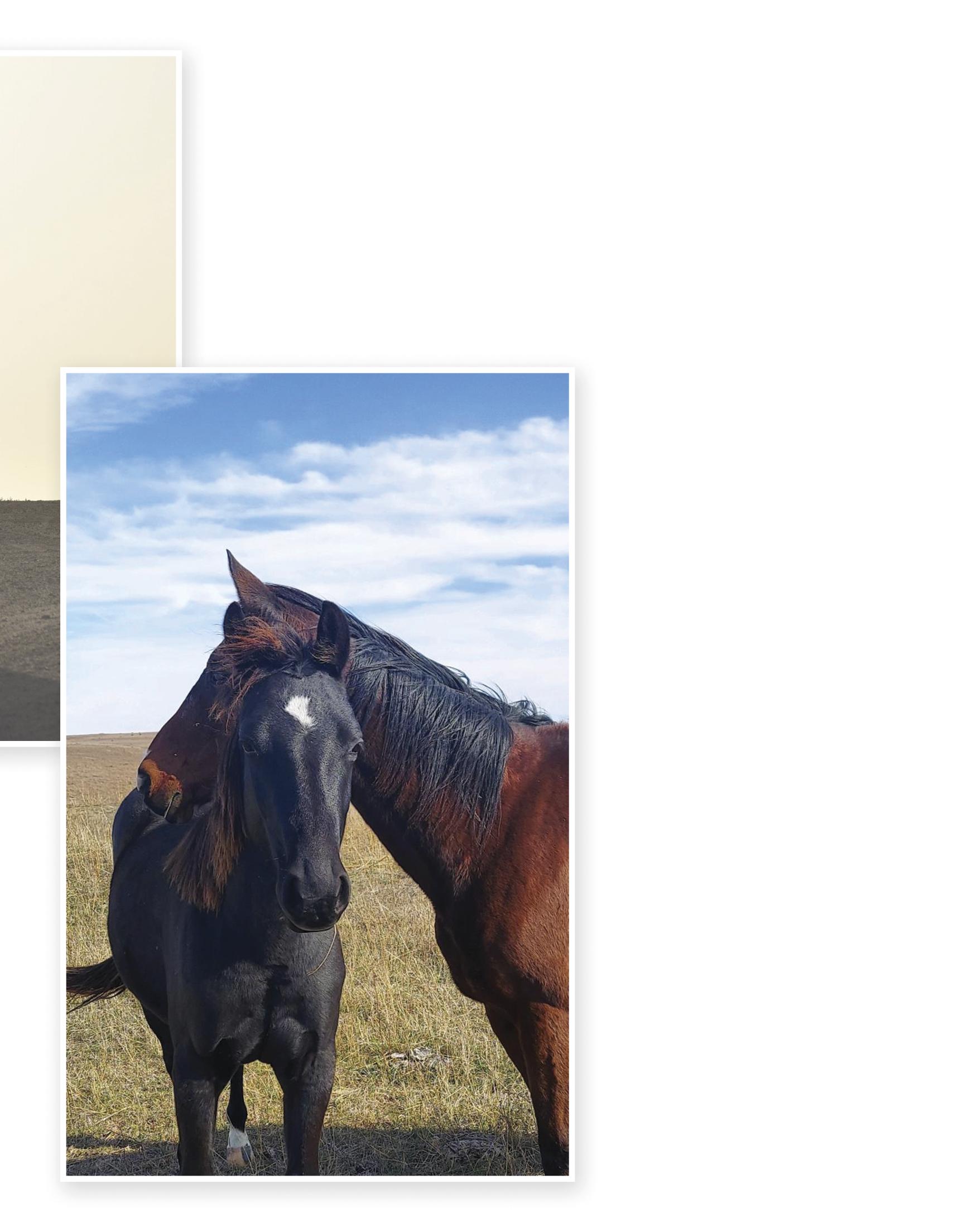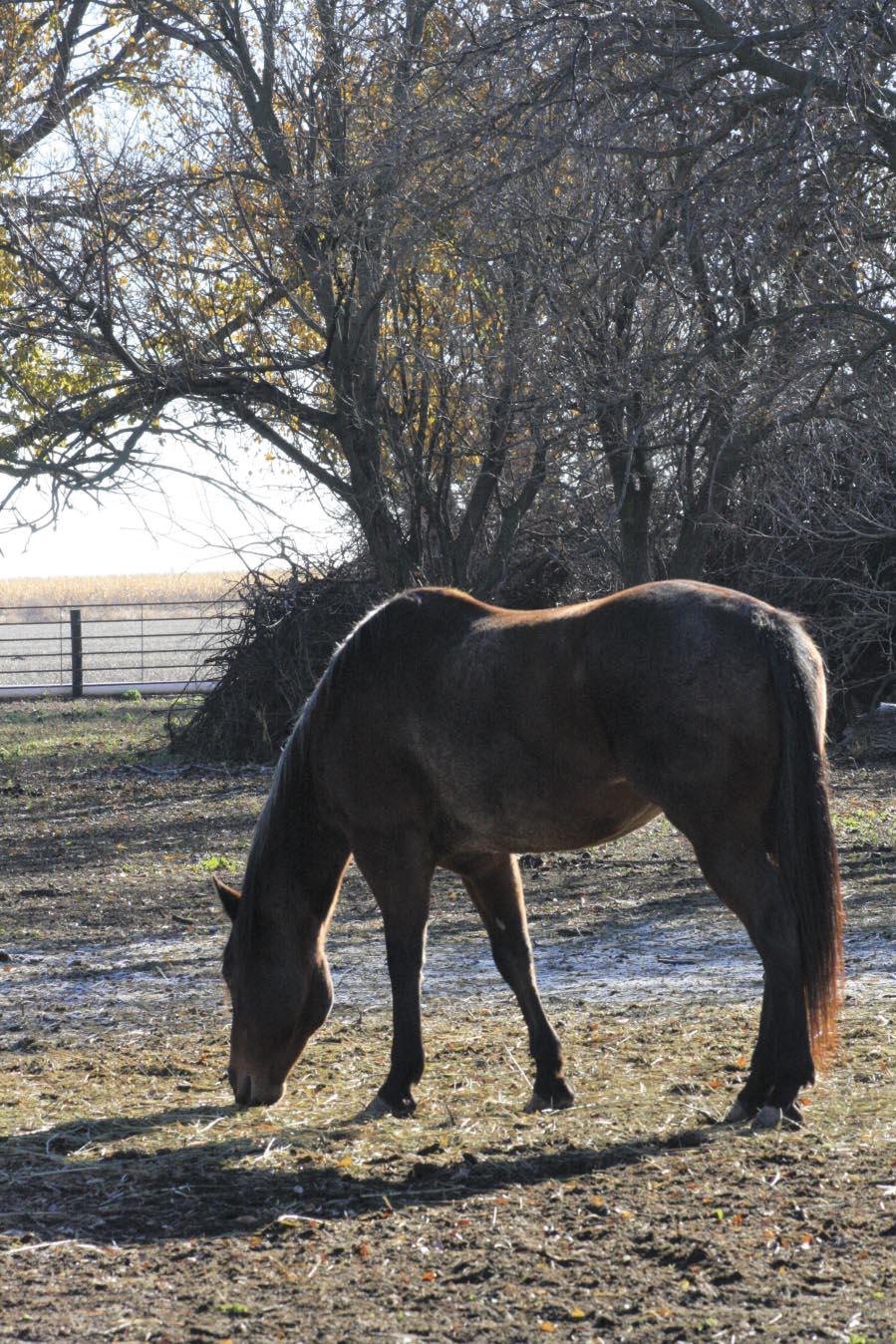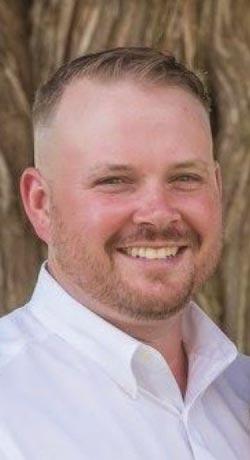
6 minute read
EQUINE PODIATRY FOR BOVINE PROTEIN PRODUCTION
By Matthew J. Wimer, DVM, CJF, Ranchland Forge Veterinary Medicine and Equine Podiatry Services
In the history of cattle production in Kansas, horses have been an efficient and dependable partner of producers to care for their cattle. From the times of cattle drives across the plains to the now daily jobs of the cowboy-horse team pulling sicks in the feedyards, checking and treating grass cattle, and caring for and working cow-calf pairs, horses have been an invaluable asset in efficient care of stock. In these modern times, the advent of feed trucks, four wheelers, and side-by-sides have aided producers further in production. However, many still rely on the horse to get the job done, as there is no other “vehicle” like them.

Farriery has always played an important part in this. Not much has changed in traditional farrier practices over the past couple hundred years. The “keg” horseshoe, or factory-made shoe, has been around since the Civil War. (It has been said that this industrial component helped the North win as the Southern blacksmiths were still making every horseshoe by hand out of any steel material they could get their hands on.) A lot of farriers still build shoes from bar stock as everyone had to before the keg. Either way, the traditional method of trimming the foot and nailing on the shoe until next time still applies. Yet, in the past several decades, a countless amount of modern farrier materials and veterinary podiatry technologies and diagnostics have begun to aid the hoof care provider to keep our equine working partners and athletes going soundly.
Why do we need shoes and other applications of modern materials on our horses? The answer is, we don’t… that is, if the horse can do their job efficiently and soundly while keeping their rider and themselves safe. There are some horses that are able to accomplish that, as they are either big-boned, solidfooted specimens of every farrier’s dream, or they simply do not have much asked of them. For many of our working horses used for cattle production, this is just not the case.

We accomplish several things by adding the shoe and/or package to the equation:
- protection of the hoof capsule
- addition of mass to the capsule
- reduction of leverage
- addition of (or reduction of) traction
- added safety for the cowboy and horse
When applying steel (or other material) to the foot, we are adding protection and stability to the capsule. This protection can be viewed as adding vertical depth to the foot itself, eliminating wear from the foot and decreasing the chance of injury from the terrain and its potential contents. A wide web shoe (a shoe that is simply wider at the branch) is a great selection for a lot of working horses from this aspect. Modern materials such as leather and plastic pads, pour in pads, hoof glues, hoof casts, and a long list of others aid in this goal when necessary.
These applications also aid in adding mass to the capsule. There are many times that feet have been worn off and basically need to be made bigger by the crafty hands of the hoof care provider. Applying a hoof cast tape to a hoof capsule and nailing a shoe to this now “enlarged foot” is a good example of this. Anatomically, compared to a human, horses stand on their middle finger and toenail. Between the two species, the weight ratio is much different, but this illustrates the importance for mass and protection of the hoof capsule. The more mass the hoof capsule has (within reason), the less potential for injury or pathology (disease process) of the foot.
By applying these shoes or packages appropriately, we can decrease the leverage arm on the hoof capsule and lower limb. This creates a healthier foot and decreases the possibility for injury to the anatomical components of the lower limb. In turn, we see an increase in performance in the horse and decrease in the potential for the rider to be injured. This may not be able to be accomplished with a foot that is bare.
Traction application is not appropriate for every horse. Many performance horses benefit from less traction in the hind end, depending on their job. Some work horses, on the other hand, benefit a great deal from it. There are many ways to add traction to the foot. Drilled and tapped caulks, drive-in studs, forge welded borium, or concave shoes are a few. The addition of traction has the potential to put more wear and tear on a horse’s hoof capsule and limb anatomy, such as ligaments; however, sometimes it is simply necessary. Furthermore, the type of horse that is required for the work that requires traction should be one built for the trade. A feedlot horse often benefits from added traction such as borium or drive-in studs on hard surfaces and icy situations. This gives the horse the grip underneath him to keep from potentially going down and the cowboy stays safe from harm. Feedlot horses are not the only ones sometimes needing traction. Some work horses that are in situations taking care of cattle on slick grasses do as well. Some farriers use a handmade concave stock shoe or rim shoe that has more grip in this situation. These riders can feel the purchase (ability to propel forward on a surface) of these shoes on these grasses compared to a flatter shoe. They can also feel the confidence in their horse to travel with more traction (ability to stop or turn comfortably without hesitance or slip). (Note: An example in the cattle production industry of traction and purchase is adding tire mats in front of chutes or adding texture to concrete in high traffic areas. For example, as a bovine comes out of the chute, the mat gives traction to help them not slip and adds purchase for them to take off down the alley.) As the horse has more confidence, there is less chance for rider and horse injury. There are riders that say the horse is always “tensed up” when they do not have the confidence of purchase or traction under them, which can lead to potential accidents. A farrier may compare it to being under a horse that is not fractious but has a constant pull on the farrier’s body while under the horse working, causing the farrier to be constantly “tensed up”. This can certainly turn into wear and tear or injury.
Unfortunately, in all aspects of cattle production, we hear of horse related accidents often. Work horses that are essential for cattle production that do not have enough foot protection or mass, too much foot and limb leverage due to inappropriate hoof care, anatomy, or dis- ease process, or do not have enough traction or purchase sometimes travel without confidence. This has a probability of leading to injury to rider and/or horse due to accidents resulting from such. The incidence of injury to the cowboy or rider and the work horse can be drastically diminished with appropriate hoof care and application of the multiple “tools in the toolbox” that the farrier possesses. It is extremely important that the cowboy or rider and the farrier have open dialogue about what each working equine athlete requires. No horse has read the textbook, and each is different in its shoeing need due to the variable of the work it is asked to do. It is particularly important to involve the veterinarian when the occasion arises, as well, whether it be a lameness work-up for a horse the farrier has questioned the need for or sedation for a young or unruly horse to keep the farrier safe. (Note: Sedation can often be avoided just by good handling by the rider while the farrier does their work.) Sometimes no matter how many “tools in the toolbox” the farrier has, veterinary intervention is greatly beneficial at times to help the rider-farrier-veterinary team accomplish its goal: keep the horse sound, and ultimately keep everyone safe.
Dr. Wimer, along with his practice as a veterinarian, is a Certi fi ed Journeyman Farrier with the American Farriers Association. He started shoeing ranch horses almost twenty years ago and continued to shoe ranch and rodeo performance horses through college and veterinary medicine school. His involvement with the AFA and the local Kansas chapter fostered quali fi cation for Certi fi ed Journeyman Farrier during his senior rotation. Dr. Wimer is a member of the Kansas State University College of Veterinary Medicine Class of 2014. After graduation, he completed an internship in the podiatry department at Rood and Riddle Equine Hospital in Lexington, KY. He now practices general veterinary medicine, veterinary podiatry, and general and performance shoeing across many breeds and disciplines in Kansas. Dr. Wimer is an adjunct faculty member at Kansas State University Veterinary Health Center. He works with other veterinarians on cases, including the staff at AMC in Great Bend. He and his wife reside in rural central Kansas.











